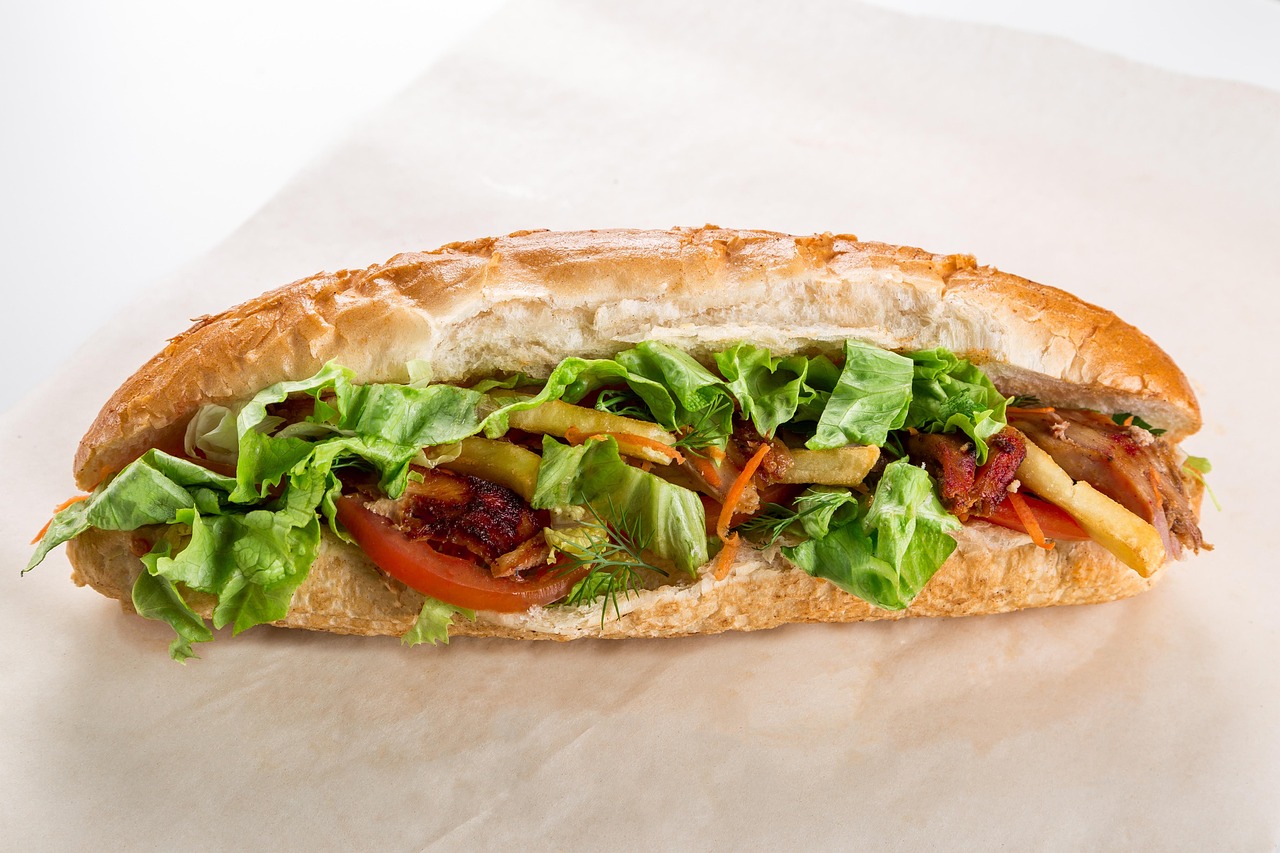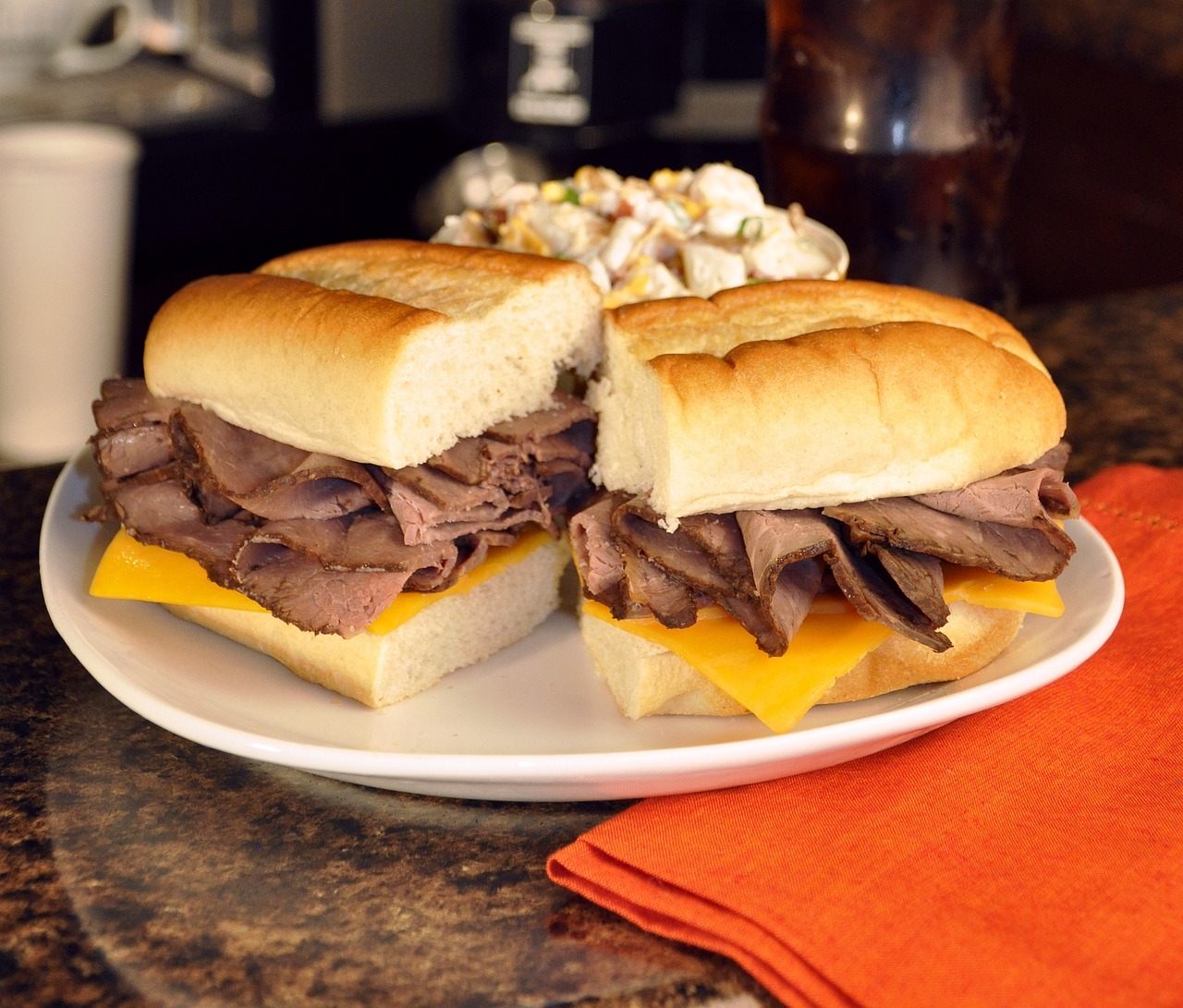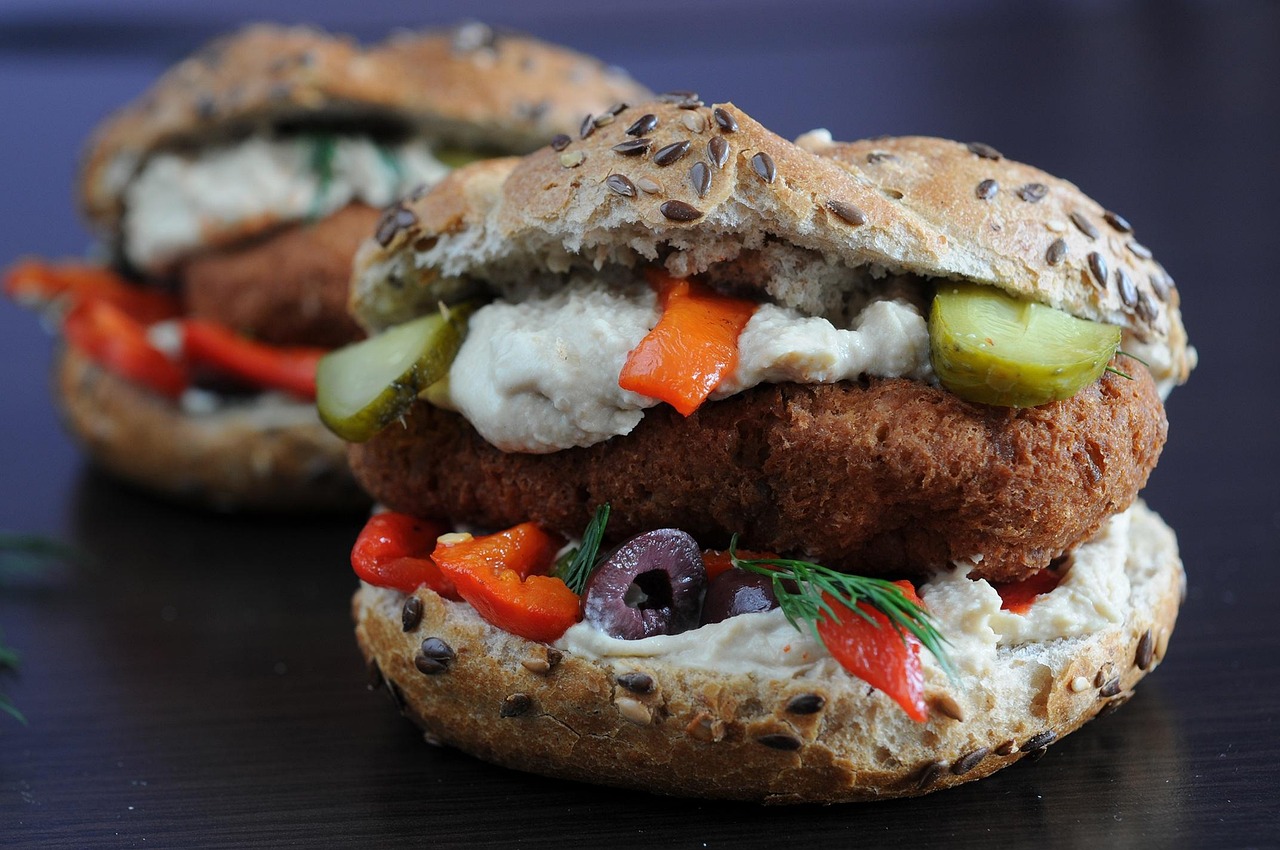How to Build a Sandwich Without Bringing Dishonor Upon Your Family

A sandwich is more than just food—it is civilization between two slices of bread. Every great society has perfected its own version, but America? America turbo-charged the concept. We took the humble act of putting stuff in bread and made it a national pastime. However, there is an art to this madness, and if you don’t respect the sandwich, you will suffer the consequences (namely, sadness and shirt stains). So let’s fix your sandwich-making before your lunch becomes an existential crisis.
And I’m going to make this simple. Instead of a long list of ideas, here are just three principles for building an amazing sandwich.
Principle #1: Layering a Sandwich Properly

Layering is what separates a great sandwich from the structural mess that falls apart halfway through. It’s all about distribution, moisture control, bite consistency, and strategic placement of key ingredients.
The Base Layer (Foundation Matters)
The bottom slice of bread is your foundation, and what you put on it determines the sandwich’s stability. A spread like butter, mayo, or mustard acts as a moisture barrier to prevent sogginess. If using meat or cheese, the heaviest or most structurally sound component should go first—something that won’t slide around or cause imbalance.
The Structural Layer (Proteins and Heft)
This is where the main protein lives. Meats should be layered thinly rather than stacked in thick slabs to create better bite texture and distribution. If using multiple proteins, they should be balanced in flavor—ham and turkey work together, but pastrami and roast chicken might clash. Cheese often goes here too, since it helps anchor everything and melts evenly if heated.
The Contrast Layer (Crunch, Acidity, and Freshness)
Here’s where you introduce crisp textures or flavor contrast—lettuce, onions, pickles, tomatoes. But order matters. Watery ingredients like tomatoes should be buffered with something absorbent (cheese, lettuce, or a spread) to avoid drenching the bread. Crunchy elements (like chips or french onions) should be strategically placed to prevent them from getting soggy.
This is also where your extra flavors come in—herbs, condiments, a final slice of cheese, or something with a punch like hot sauce or honey drizzle. The idea is to top off the flavors without overwhelming the main components.
The Crown (Top Bread and Final Considerations)
The top slice of bread should complement the structure. If the sandwich is overstuffed, using a softer or slightly pressed top bread helps prevent ingredients from sliding out. If the sandwich is grilled, this layer is crucial for achieving a crisp bite that seals everything in.
The biggest mistake? Stacking everything without purpose. A sandwich isn’t just a pile of ingredients—it’s a structured experience that should make sense in both bite consistency and flavor layering.
Principle #2: Less is More

There’s a misguided belief that more ingredients automatically make a sandwich better. False. If you have too many flavors competing, they drown each other out. If your sandwich is overstuffed, congratulations, you’ve made a performance art piece rather than a meal. Consider downsizing before it legally qualifies as a weapon.
The best sandwiches focus on a few well-chosen ingredients, letting each one shine rather than turning into a chaotic mess of flavors fighting for dominance. This is why the BLT, French dip, and hot pastrami are all so famous: few ingredients, well made. It’s also why I personally believe bacon doesn’t belong on a burger and it’s just pointless indulgence.
A minimalist sandwich thrives on:
- Ingredient quality—if you’re using three ingredients, they better be good.
- Balance—each element should serve a purpose. If you’re adding something, ask why?
- Contrast—without layers of texture and flavor, simplicity turns into blandness.
Examples of "less is more" done right:
- Caprese sandwich: Tomato, mozzarella, basil, olive oil, and balsamic on a baguette. Simple, yet each ingredient pulls its weight.
- Prosciutto and butter sandwich: High-quality prosciutto with cultured butter on fresh bread. No unnecessary fluff—just perfection in simplicity.
- Grilled cheese: Bread, cheese, maybe a touch of mustard. No need for 15 extra toppings if the cheese and bread are good.
Principle #3: Balance

A traditional meal emphasizes protein, starch, and vegetables—sandwiches follow a similar principle, but it’s more fluid.
Bread = Starch (Foundation)
This provides the bulk and structure, just like a rice or potato component in a meal. The type of bread dictates the sandwich’s weight—dense bread (ciabatta, rye) supports heavier fillings, while softer bread (brioche, white) works for delicate ones.
Protein = The Anchor
Meats, cheese, or plant-based proteins define the sandwich’s identity. Whether it’s roast beef, tofu, or tuna, this is the centerpiece.
Vegetables = Freshness and Balance
While not all sandwiches emphasize veggies, they help with flavor contrast. Greens, tomatoes, onions, and pickles all contribute freshness and acidity, which tons of us forget about.
Fat and Acidity = The Glue
Spreads, sauces, and condiments play the balancing role. Mayo, butter, mustard, vinegar-based toppings, or even citrus elements prevent a sandwich from being too dry or too rich.
If a sandwich lacks one of these components, it often feels "off." A turkey sandwich without something fatty (mayo, cheese, avocado) is too dry. A grilled cheese without acid (tomato soup, pickles, mustard) is overwhelming. The magic is in balancing these roles.
Bonus Tip: Wrap Your Sandwiches

This isn’t always necessary, but if you’ve put time and effort into a nice sandwich, then it’s worth wrapping like they would in a deli.
Why? Several reasons.
1. Structural Integrity: Wrapping snugs everything up. It compresses the bread just enough, and it gets all the other ingredients situated. Have you ever eaten a sandwich where after one bite, everything falls out the side? Yeah, wrapping prevents that nonsense.
2. Flavor Fusion: A well-wrapped sandwich lets the flavors marry. When a sandwich sits tightly wrapped, the condiments get a chance to integrate into the bread (just eat it before it gets soggy), and the ingredients settle into each other.
3. Transportability: If you’re taking your sandwich anywhere other than your kitchen, wrapping is non-negotiable. A properly wrapped sandwich is compact, easy to carry, and won’t disintegrate in your hands. Plus, it lets you eat like a civilized human being—slowly unwrapping as you go, rather than juggling a collapsing pile of ingredients like a fool.
How to Wrap Like a Pro
- Use parchment paper, wax paper, or foil—never plastic wrap.
- Lay the sandwich in the center, fold the paper tightly over the top, and roll it inwards like a burrito.
- Tuck in the sides as you roll, keeping everything snug.
- If it’s a particularly loaded sandwich, consider slicing it in half before wrapping, so each half stays structurally sound.
- If storing, keep it wrapped until you’re ready to eat—this keeps everything cohesive.
In short, wrap your sandwich like it’s a treasure—because if you’ve built it right, it is.
In summary: respect the layers, don’t go overboard, balance your flavors, and wrap your sandwich like a responsible adult. If you follow these principles, you will not only have better sandwiches, but you may also achieve enlightenment—yes, the same enlightenment that Buddha was searching for. At the very least, do things right and you’ll avoid eating a disappointing pile of bread. Now go forth and sandwich wisely.
 Matthew Christensen
Matthew Christensen
Weekly Newsletter Contributor since 2023
Email the author! matthew@dvo.com
